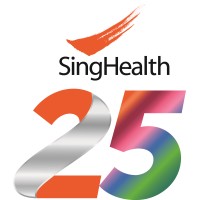
SingHealth Company Cyber Security Posture
singhealth.com.sgSingHealth drives the transformation of healthcare and provides affordable, accessible, quality healthcare. With over 40 clinical specialties, a network of acute hospitals, national specialty centres, polyclinics and community hospitals, it delivers comprehensive, multidisciplinary and integrated care. As part of the SingHealth Duke-NUS Academic Medical Centre, SingHealth works with Duke-NUS Medical School to advance medical research and education to improve patient care.
SingHealth Company Details
singhealth
2724 employees
76540.0
62
Hospitals and Health Care
singhealth.com.sg
42
SIN_1178083
In-progress
Between 800 and 900
This score is AI-generated and less favored by cyber insurers, who prefer the TPRM score.
 SingHealth Global Score
SingHealth Global Score.png)

SingHealth Company Scoring based on AI Models
| Model Name | Date | Description | Current Score Difference | Score |
|---|---|---|---|---|
| AVERAGE-Industry | 03-12-2025 | This score represents the average cybersecurity rating of companies already scanned within the same industry. It provides a benchmark to compare an individual company's security posture against its industry peers. | N/A | Between 800 and 900 |
SingHealth Company Cyber Security News & History
| Entity | Type | Severity | Impact | Seen | Url ID | Details | View |
|---|---|---|---|---|---|---|---|
| SingHealth | Breach | 100 | 09/2018 | SIN150311022 | Link | ||
Rankiteo Explanation : Attack threatening the organization's existenceDescription: The breach compromised personal data of 1.5 million SingHealth patients. The incident also compromised outpatient medical data of 160,000 patients that visited the healthcare provider's facilities, which included four public hospitals, nine polyclinics, and 42 clinical specialties. The attackers used a publicly available hacking tool to breach an end-user workstation. The workstation was running a version of Microsoft Outlook that was not updated with a patch to address the use of the hacking tool. | |||||||
| SingHealth | Data Leak | 85 | 4 | 07/2018 | SIN02111122 | Link | |
Rankiteo Explanation : Attack with significant impact with customers data leaksDescription: Hackers broke into SingHealth's IT systems to steal the data of 1.5 million patients and records of the outpatient medication given to Prime Minister Lee Hsien Loong. The attackers specifically and repeatedly targeted Mr. Lee's personal particulars and information on his outpatient dispensed medicines. The hackers first broke into SingHealth's IT system via a front-end workstation, and later managed to obtain log-in details to assess the database Data compromised included name, NRIC number, address, gender, race, and date of birth of 1.5 million patients. | |||||||
| SingHealth | Vulnerability | 100 | 5 | 09/2018 | SIN212830922 | Link | |
Rankiteo Explanation : Attack threatening the organization's existenceDescription: Singapore faced most severe cybersecurity breach. It has uncovered several poor security practices, including the use of weak administrative passwords and unpatched workstations. The security breach compromised personal data of 1.5 million SingHealth patients. The incident also compromised outpatient medical data of 160,000 patients that visited the healthcare provider's facilities, which included four public hospitals, nine polyclinics, and 42 clinical specialties. | |||||||
SingHealth Company Subsidiaries

SingHealth drives the transformation of healthcare and provides affordable, accessible, quality healthcare. With over 40 clinical specialties, a network of acute hospitals, national specialty centres, polyclinics and community hospitals, it delivers comprehensive, multidisciplinary and integrated care. As part of the SingHealth Duke-NUS Academic Medical Centre, SingHealth works with Duke-NUS Medical School to advance medical research and education to improve patient care.
Access Data Using Our API

Get company history
.png)
SingHealth Cyber Security News
Commentary: Singapore is going from cybersecurity to cybermaturity
As the lines between cybercrime and cyberthreats to national security blur, Singapore must be resilient, not reactive, says Dr Shashi Jayakumar.
Why cybersecurity conferences still matter in Singapore
Conferences offer hands-on learning and peer exchange as Singapore's cybersecurity landscape grows more complex.
Southeast Asia, Cyber Threats, and Opportunities for Canadian Co-operation: The Cases of Singapore and the Philippines
This Explainer explores the cases of Singapore and the Philippines to highlight the diversity of cyber breaches faced by Southeast Asia.
Singapore lags ASEAN peers in cybersecurity readiness
Singapore's cybersecurity maturity has fallen behind its ASEAN counterparts, according to a new benchmark study by Palo Alto Networks.
Few Singapore SMEs have cyber insurance
Fewer than four of 10 small and medium enterprises in Singapore have cyber insurance, with many of them turned off by the added cost, according ...
Singapore to introduce Digital Infrastructure Act later this year
The DIA will regulate systemically important digital infrastructure such as major cloud service providers (CSPs) and data centre (DC) operators ...
Staff lapses and IT system vulnerabilities are key reasons behind SingHealth cyberattack, according to COI Report
Staff lapses and IT system vulnerabilities are key reasons behind SingHealth cyberattack, according to COI Report. The Committee of Inquiry, ...
Hacker group behind SingHealth data breach identified, targeted mainly Singapore firms
Hackers that compromised the data of 1.5 million SingHealth patients have been identified as a group that launched attacks against several ...
Singapore health system breach likely conducted by APT group, government says
The minister of communications and information says the attackers used sophisticated methods to conduct the hack and evade detection.

SingHealth Similar Companies
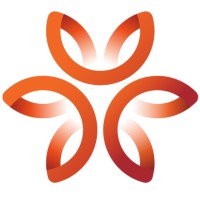
Dignity Health
We provide quality, compassionate health care at more than 40 hospitals and care centers that are serving communities across California, Arizona and Nevada every minute of every day. And while not everyone may live near a major medical facility, Dignity Health is making health care more accessible b
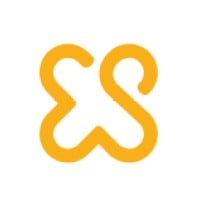
ELSAN
ELSAN, groupe leader de l’hospitalisation privée en France, compte aujourd’hui plus de 28 000 collaborateurs et 7500 médecins libéraux qui exercent dans les 212 établissements et centres du groupe. Ils prennent en charge plus de 4,8 millions de patients par an. Notre mission : offrir à chac

UPMC
UPMC is a world-renowned, nonprofit health care provider and insurer committed to delivering exceptional, people-centered care and community services. Headquartered in Pittsburgh and affiliated with the University of Pittsburgh Schools of the Health Sciences, UPMC is shaping the future of health thr
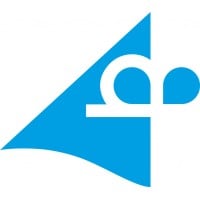
Evangelische Heimstiftung GmbH
Stell dir vor, gemeinsam gestalten wir gute Pflege. Diakonisch – Innovativ – Professionell. Wir sind die Evangelische Heimstiftung – das größte diakonische Pflegeunternehmen in THE LÄND. Gemeinsam mit 10.200 Mitarbeitenden und 810 Auszubildenden betreuen wir 14.760 Menschen in 172 Einrichtu
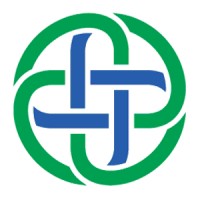
Texas Health Resources
At Texas Health Resources, our mission is to improve the health of the people in the communities we serve. We are one of the largest faith-based, nonprofit health systems in the United States with a team of more than 28,000 employees of wholly owned/operated facilities and consolidated joint ventur
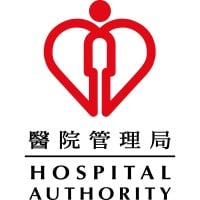
Hospital Authority
The Hospital Authority (HA) is a statutory body established under the Hospital Authority Ordinance in 1990. We have been responsible for managing Hong Kong's public hospitals services since December 1991. We are accountable to the Hong Kong Special Administrative Region Government through the Secret

Frequently Asked Questions (FAQ) on Cybersecurity Incidents
SingHealth CyberSecurity History Information
Total Incidents: According to Rankiteo, SingHealth has faced 3 incidents in the past.
Incident Types: The types of cybersecurity incidents that have occurred include ['Data Leak', 'Vulnerability', 'Breach'].
Total Financial Loss: The total financial loss from these incidents is estimated to be {total_financial_loss}.
Cybersecurity Posture: The company's overall cybersecurity posture is described as SingHealth drives the transformation of healthcare and provides affordable, accessible, quality healthcare. With over 40 clinical specialties, a network of acute hospitals, national specialty centres, polyclinics and community hospitals, it delivers comprehensive, multidisciplinary and integrated care. As part of the SingHealth Duke-NUS Academic Medical Centre, SingHealth works with Duke-NUS Medical School to advance medical research and education to improve patient care..
Detection and Response: The company detects and responds to cybersecurity incidents through {description_of_detection_and_response_process}.
Incident Details
Incident 1: Ransomware Attack
Title: {Incident_Title}
Description: {Brief_description_of_the_incident}
Date Detected: {Detection_Date}
Date Publicly Disclosed: {Disclosure_Date}
Date Resolved: {Resolution_Date}
Type: {Type_of_Attack}
Attack Vector: {Attack_Vector}
Vulnerability Exploited: {Vulnerability}
Threat Actor: {Threat_Actor}
Motivation: {Motivation}
Incident 2: Data Breach
Title: {Incident_Title}
Description: {Brief_description_of_the_incident}
Date Detected: {Detection_Date}
Date Publicly Disclosed: {Disclosure_Date}
Date Resolved: {Resolution_Date}
Type: {Type_of_Attack}
Attack Vector: {Attack_Vector}
Vulnerability Exploited: {Vulnerability}
Threat Actor: {Threat_Actor}
Motivation: {Motivation}
Common Attack Types: As of now, the company has not encountered any reported incidents involving common cyberattacks.
Identification of Attack Vectors: The company identifies the attack vectors used in incidents through {description_of_identification_process}.
Impact of the Incidents
Incident 1: Ransomware Attack
Financial Loss: {Financial_Loss}
Data Compromised: {Data_Compromised}
Systems Affected: {Systems_Affected}
Downtime: {Downtime}
Operational Impact: {Operational_Impact}
Conversion Rate Impact: {Conversion_Rate_Impact}
Revenue Loss: {Revenue_Loss}
Customer Complaints: {Customer_Complaints}
Brand Reputation Impact: {Brand_Reputation_Impact}
Legal Liabilities: {Legal_Liabilities}
Identity Theft Risk: {Identity_Theft_Risk}
Payment Information Risk: {Payment_Information_Risk}
Incident 2: Data Breach
Financial Loss: {Financial_Loss}
Data Compromised: {Data_Compromised}
Systems Affected: {Systems_Affected}
Downtime: {Downtime}
Operational Impact: {Operational_Impact}
Conversion Rate Impact: {Conversion_Rate_Impact}
Revenue Loss: {Revenue_Loss}
Customer Complaints: {Customer_Complaints}
Brand Reputation Impact: {Brand_Reputation_Impact}
Legal Liabilities: {Legal_Liabilities}
Identity Theft Risk: {Identity_Theft_Risk}
Payment Information Risk: {Payment_Information_Risk}
Average Financial Loss: The average financial loss per incident is {average_financial_loss}.
Commonly Compromised Data Types: The types of data most commonly compromised in incidents are {list_of_commonly_compromised_data_types}.
Incident 1: Ransomware Attack
Entity Name: {Entity_Name}
Entity Type: {Entity_Type}
Industry: {Industry}
Location: {Location}
Size: {Size}
Customers Affected: {Customers_Affected}
Incident 2: Data Breach
Entity Name: {Entity_Name}
Entity Type: {Entity_Type}
Industry: {Industry}
Location: {Location}
Size: {Size}
Customers Affected: {Customers_Affected}
Response to the Incidents
Incident 1: Ransomware Attack
Incident Response Plan Activated: {Yes/No}
Third Party Assistance: {Yes/No}
Law Enforcement Notified: {Yes/No}
Containment Measures: {Containment_Measures}
Remediation Measures: {Remediation_Measures}
Recovery Measures: {Recovery_Measures}
Communication Strategy: {Communication_Strategy}
Adaptive Behavioral WAF: {Adaptive_Behavioral_WAF}
On-Demand Scrubbing Services: {On_Demand_Scrubbing_Services}
Network Segmentation: {Network_Segmentation}
Enhanced Monitoring: {Enhanced_Monitoring}
Incident 2: Data Breach
Incident Response Plan Activated: {Yes/No}
Third Party Assistance: {Yes/No}
Law Enforcement Notified: {Yes/No}
Containment Measures: {Containment_Measures}
Remediation Measures: {Remediation_Measures}
Recovery Measures: {Recovery_Measures}
Communication Strategy: {Communication_Strategy}
Adaptive Behavioral WAF: {Adaptive_Behavioral_WAF}
On-Demand Scrubbing Services: {On_Demand_Scrubbing_Services}
Network Segmentation: {Network_Segmentation}
Enhanced Monitoring: {Enhanced_Monitoring}
Incident Response Plan: The company's incident response plan is described as {description_of_incident_response_plan}.
Third-Party Assistance: The company involves third-party assistance in incident response through {description_of_third_party_involvement}.
Data Breach Information
Incident 2: Data Breach
Type of Data Compromised: {Type_of_Data}
Number of Records Exposed: {Number_of_Records}
Sensitivity of Data: {Sensitivity_of_Data}
Data Exfiltration: {Yes/No}
Data Encryption: {Yes/No}
File Types Exposed: {File_Types}
Personally Identifiable Information: {Yes/No}
Prevention of Data Exfiltration: The company takes the following measures to prevent data exfiltration: {description_of_prevention_measures}.
Handling of PII Incidents: The company handles incidents involving personally identifiable information (PII) through {description_of_handling_process}.
Ransomware Information
Incident 1: Ransomware Attack
Ransom Demanded: {Ransom_Amount}
Ransom Paid: {Ransom_Paid}
Ransomware Strain: {Ransomware_Strain}
Data Encryption: {Yes/No}
Data Exfiltration: {Yes/No}
Ransom Payment Policy: The company's policy on paying ransoms in ransomware incidents is described as {description_of_ransom_payment_policy}.
Data Recovery from Ransomware: The company recovers data encrypted by ransomware through {description_of_data_recovery_process}.
Regulatory Compliance
Incident 1: Ransomware Attack
Regulations Violated: {Regulations_Violated}
Fines Imposed: {Fines_Imposed}
Legal Actions: {Legal_Actions}
Regulatory Notifications: {Regulatory_Notifications}
Incident 2: Data Breach
Regulations Violated: {Regulations_Violated}
Fines Imposed: {Fines_Imposed}
Legal Actions: {Legal_Actions}
Regulatory Notifications: {Regulatory_Notifications}
Regulatory Frameworks: The company complies with the following regulatory frameworks regarding cybersecurity: {list_of_regulatory_frameworks}.
Ensuring Regulatory Compliance: The company ensures compliance with regulatory requirements through {description_of_compliance_measures}.
Lessons Learned and Recommendations
Incident 1: Ransomware Attack
Lessons Learned: {Lessons_Learned}
Incident 2: Data Breach
Lessons Learned: {Lessons_Learned}
Incident 1: Ransomware Attack
Recommendations: {Recommendations}
Incident 2: Data Breach
Recommendations: {Recommendations}
Key Lessons Learned: The key lessons learned from past incidents are {list_of_key_lessons_learned}.
Implemented Recommendations: The company has implemented the following recommendations to improve cybersecurity: {list_of_implemented_recommendations}.
References
Additional Resources: Stakeholders can find additional resources on cybersecurity best practices at {list_of_additional_resources}.
Investigation Status
Incident 1: Ransomware Attack
Investigation Status: {Investigation_Status}
Incident 2: Data Breach
Investigation Status: {Investigation_Status}
Communication of Investigation Status: The company communicates the status of incident investigations to stakeholders through {description_of_communication_process}.
Stakeholder and Customer Advisories
Incident 1: Ransomware Attack
Stakeholder Advisories: {Stakeholder_Advisories}
Customer Advisories: {Customer_Advisories}
Incident 2: Data Breach
Stakeholder Advisories: {Stakeholder_Advisories}
Customer Advisories: {Customer_Advisories}
Advisories Provided: The company provides the following advisories to stakeholders and customers following an incident: {description_of_advisories_provided}.
Initial Access Broker
Incident 1: Ransomware Attack
Entry Point: {Entry_Point}
Reconnaissance Period: {Reconnaissance_Period}
Backdoors Established: {Backdoors_Established}
High Value Targets: {High_Value_Targets}
Data Sold on Dark Web: {Yes/No}
Incident 2: Data Breach
Entry Point: {Entry_Point}
Reconnaissance Period: {Reconnaissance_Period}
Backdoors Established: {Backdoors_Established}
High Value Targets: {High_Value_Targets}
Data Sold on Dark Web: {Yes/No}
Monitoring and Mitigation of Initial Access Brokers: The company monitors and mitigates the activities of initial access brokers through {description_of_monitoring_and_mitigation_measures}.
Post-Incident Analysis
Incident 1: Ransomware Attack
Root Causes: {Root_Causes}
Corrective Actions: {Corrective_Actions}
Incident 2: Data Breach
Root Causes: {Root_Causes}
Corrective Actions: {Corrective_Actions}
Post-Incident Analysis Process: The company's process for conducting post-incident analysis is described as {description_of_post_incident_analysis_process}.
Corrective Actions Taken: The company has taken the following corrective actions based on post-incident analysis: {list_of_corrective_actions_taken}.
Additional Questions
General Information
Ransom Payment History: The company has {paid/not_paid} ransoms in the past.
Last Ransom Demanded: The amount of the last ransom demanded was {last_ransom_amount}.
Last Attacking Group: The attacking group in the last incident was {last_attacking_group}.
Incident Details
Most Recent Incident Detected: The most recent incident detected was on {most_recent_incident_detected_date}.
Most Recent Incident Publicly Disclosed: The most recent incident publicly disclosed was on {most_recent_incident_publicly_disclosed_date}.
Most Recent Incident Resolved: The most recent incident resolved was on {most_recent_incident_resolved_date}.
Impact of the Incidents
Highest Financial Loss: The highest financial loss from an incident was {highest_financial_loss}.
Most Significant Data Compromised: The most significant data compromised in an incident was {most_significant_data_compromised}.
Most Significant System Affected: The most significant system affected in an incident was {most_significant_system_affected}.
Response to the Incidents
Third-Party Assistance in Most Recent Incident: The third-party assistance involved in the most recent incident was {third_party_assistance_in_most_recent_incident}.
Containment Measures in Most Recent Incident: The containment measures taken in the most recent incident were {containment_measures_in_most_recent_incident}.
Data Breach Information
Most Sensitive Data Compromised: The most sensitive data compromised in a breach was {most_sensitive_data_compromised}.
Number of Records Exposed: The number of records exposed in the most significant breach was {number_of_records_exposed}.
Ransomware Information
Highest Ransom Demanded: The highest ransom demanded in a ransomware incident was {highest_ransom_demanded}.
Highest Ransom Paid: The highest ransom paid in a ransomware incident was {highest_ransom_paid}.
Regulatory Compliance
Highest Fine Imposed: The highest fine imposed for a regulatory violation was {highest_fine_imposed}.
Most Significant Legal Action: The most significant legal action taken for a regulatory violation was {most_significant_legal_action}.
Lessons Learned and Recommendations
Most Significant Lesson Learned: The most significant lesson learned from past incidents was {most_significant_lesson_learned}.
Most Significant Recommendation Implemented: The most significant recommendation implemented to improve cybersecurity was {most_significant_recommendation_implemented}.
References
Most Recent Source: The most recent source of information about an incident is {most_recent_source}.
Most Recent URL for Additional Resources: The most recent URL for additional resources on cybersecurity best practices is {most_recent_url}.
Investigation Status
Current Status of Most Recent Investigation: The current status of the most recent investigation is {current_status_of_most_recent_investigation}.
Stakeholder and Customer Advisories
Most Recent Stakeholder Advisory: The most recent stakeholder advisory issued was {most_recent_stakeholder_advisory}.
Most Recent Customer Advisory: The most recent customer advisory issued was {most_recent_customer_advisory}.
Initial Access Broker
Most Recent Entry Point: The most recent entry point used by an initial access broker was {most_recent_entry_point}.
Most Recent Reconnaissance Period: The most recent reconnaissance period for an incident was {most_recent_reconnaissance_period}.
Post-Incident Analysis
Most Significant Root Cause: The most significant root cause identified in post-incident analysis was {most_significant_root_cause}.
Most Significant Corrective Action: The most significant corrective action taken based on post-incident analysis was {most_significant_corrective_action}.
What Do We Measure?
















Every week, Rankiteo analyzes billions of signals to give organizations a sharper, faster view of emerging risks. With deeper, more actionable intelligence at their fingertips, security teams can outpace threat actors, respond instantly to Zero-Day attacks, and dramatically shrink their risk exposure window.
These are some of the factors we use to calculate the overall score:
Identify exposed access points, detect misconfigured SSL certificates, and uncover vulnerabilities across the network infrastructure.
Gain visibility into the software components used within an organization to detect vulnerabilities, manage risk, and ensure supply chain security.
Monitor and manage all IT assets and their configurations to ensure accurate, real-time visibility across the company's technology environment.
Leverage real-time insights on active threats, malware campaigns, and emerging vulnerabilities to proactively defend against evolving cyberattacks.




